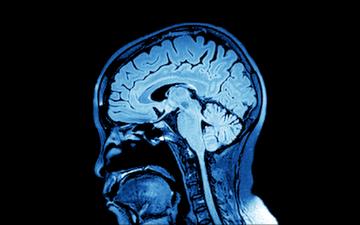
An Ethics Case Study
Brain-computer interfaces (BCIs) have advanced dramatically in recent years, and have now become recognized treatments for a variety of conditions, including blindness and problems in motor control. BCIs can permit both inbound and outbound signaling--for example, receiving visual inputs and sending motor commands, respectively. Patients thereby can gain conscious interaction with objects via a computer (e.g. seeing through a subretinal electronic chip or controlling a robotic arm).
Deep brain stimulation (DBS) is similar to BCI in that it implants electrodes or chips inside a brain, but typically deep into the center of the brain. DBS is a demonstrated treatment for “movement and affective disorders, such as chronic pain, Parkinson's disease, tremor and dystonia” (1). Studies have also shown that DBS might be a potential treatment for treatment-resistant depression (2). In this way, if further research confirms these results, DBS may become a treatment option not only for people with treatment-resistant depression, but also for other mood conditions.
By combining the two techniques, DBS and BCI, patients could conceivably gain conscious control over their own moods. A BCI implant would detect the patient’s desire to change mood and the DBS would then activate the part of the brain necessary to adjust that mood to another state. Technologists propose to create such an implant. What would an ethical analysis of such a proposal tell us?
REFERENCES
(1) Morten L. Kringelbach, Ned Jenkinson, Sarah L.F. Owen & Tipu Z. Aziz. “Translational principles of deep brain stimulation.” Nature Reviews Neuroscience, vol 8, pgs 623–635 (2007), doi:10.1038/nrn2196, https://www.nature.com/articles/nrn2196
(2) RJ Anderson, MA Frye, OA Abulseoud, et al. "Deep brain stimulation for treatment-resistant depression: efficacy, safety and mechanisms of action". Neurosci Biobehav Rev. 36:8 (September 2012): 1920–33. doi:10.1016/j.neubiorev.2012.06.001. PMID 22721950. https://www.sciencedirect.com/science/article/pii/S0149763412000917?via%3Dihub
CASE STUDY QUESTIONS
- If developed, what other uses/applications might be found for this device, beyond treatment for severe depression? Which of these raise significant ethical issues?
- Who are the stakeholders involved? Who should be consulted about such a project’s goals and development?
- What additional facts might be required? What practical steps might you need to take in order to access the information/perspectives needed to manage the ethical landscape of this project?
- What are some other ethical issues that any designers/developers of such a product would need to address?
- How might this project be evaluated through the various ethical 'lenses' described in the “Conceptual Frameworks” document?
- In this project, what moral values are potentially conflicting with each other? Is there any way to reconcile them? Even if conflict is unavoidable, are there ways to respect all relevant interests/values? How?
- As a project team, how might you go about sorting through these ethical issues and addressing them? Which of the ethical issues you have identified would you prioritize, and why?
- Who would be the appropriate persons on a team to take those steps? At what level, and by what methods, should decisions be made within the company about how to manage the ethical issues raised by this project?